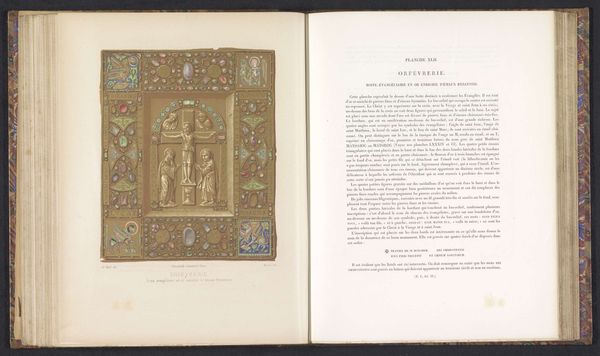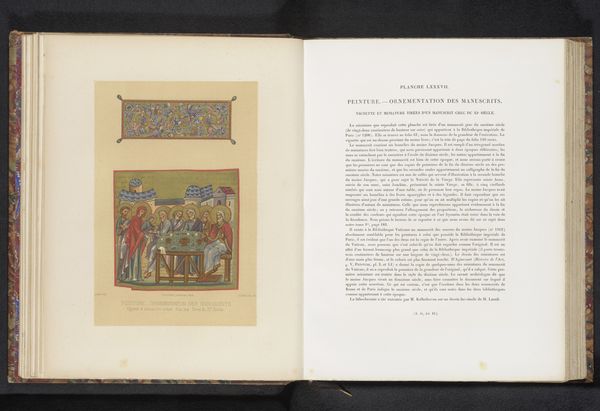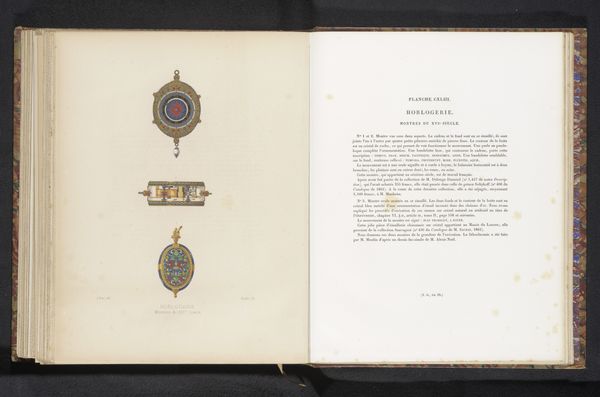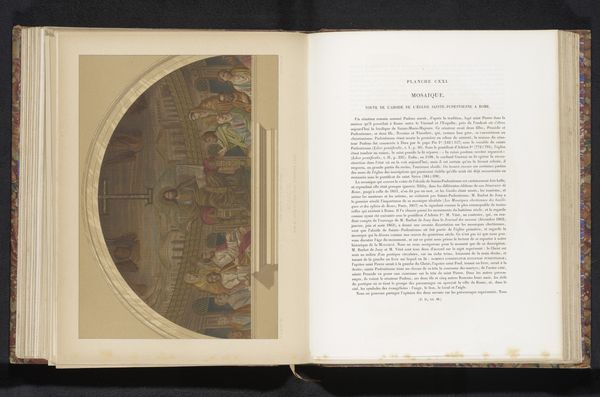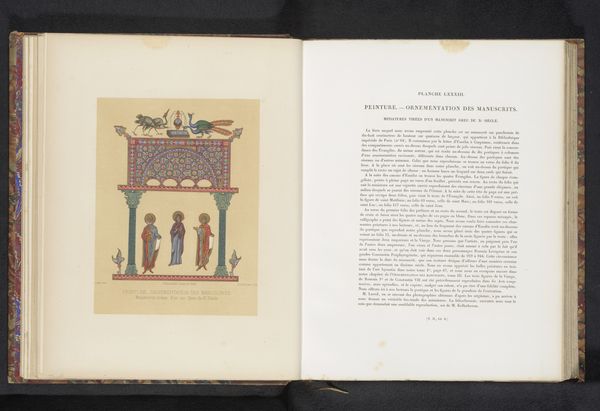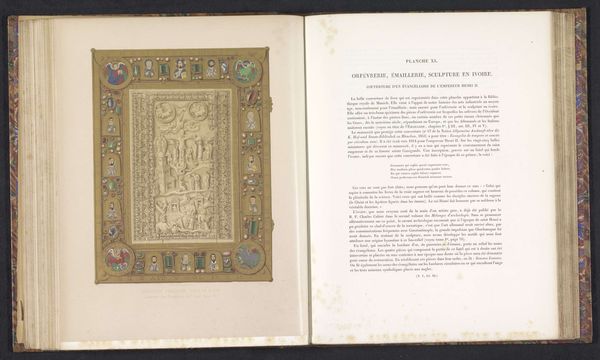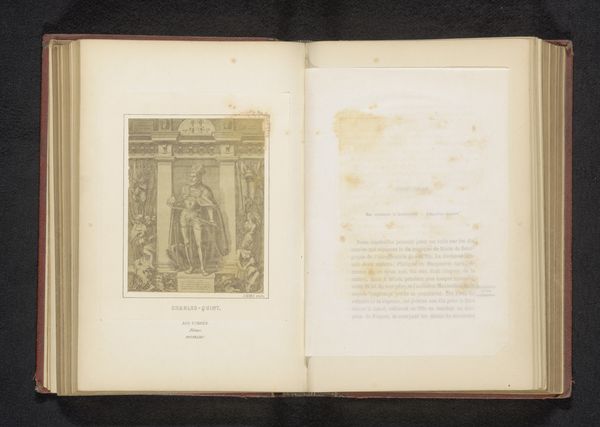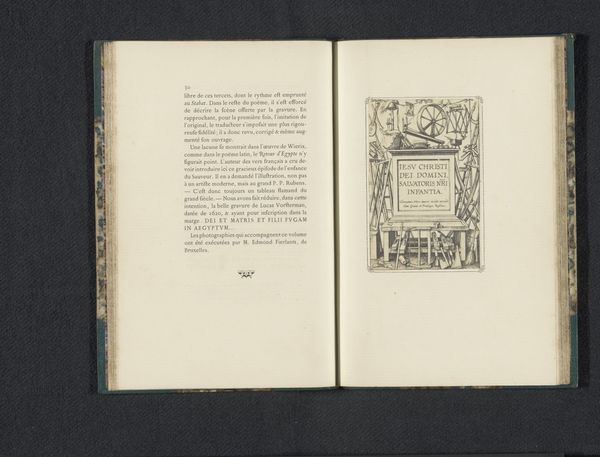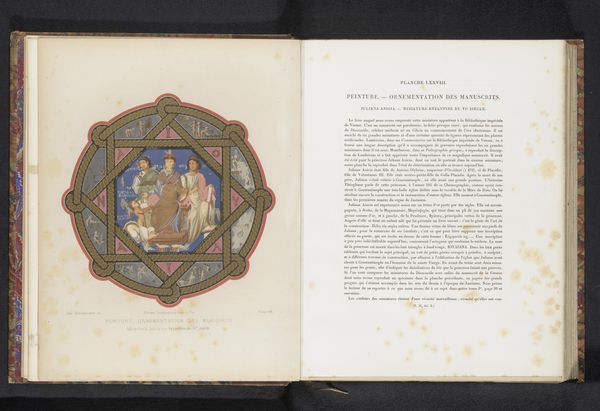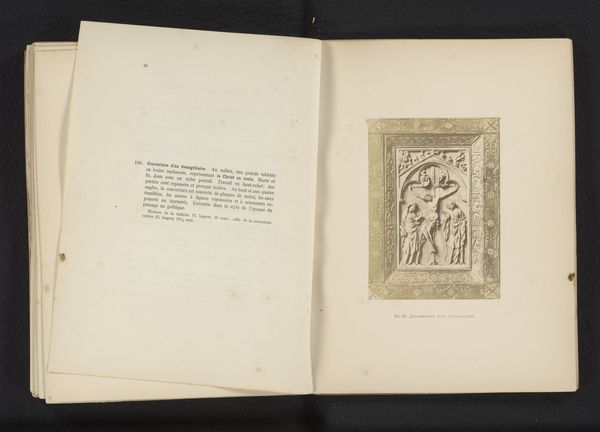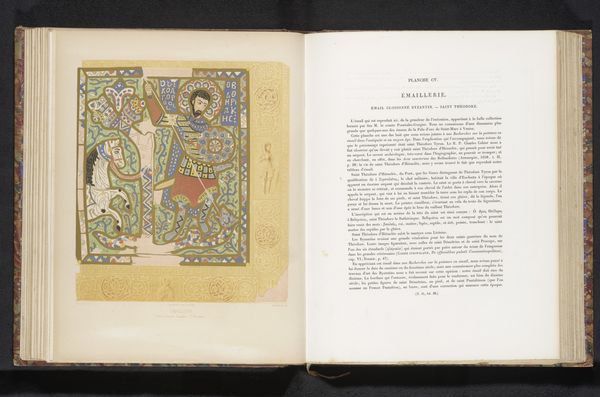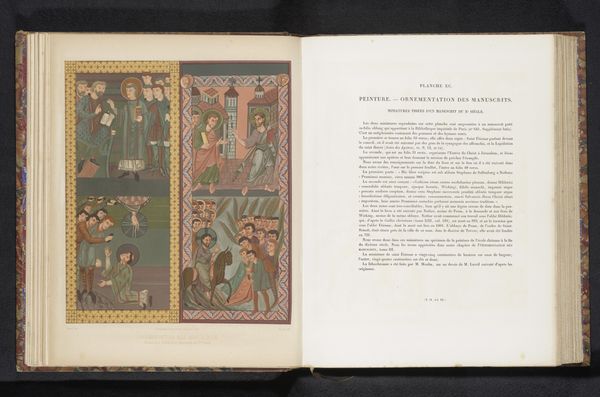
Reproductie van een verluchte pagina met de geboorte van Christus before 1864
print, etching
etching
coloured pencil
history-painting
miniature
Dimensions: height 184 mm, width 274 mm
Copyright: Rijks Museum: Open Domain
Curator: The image here, a print reproducing an illuminated page, purportedly depicting the birth of Christ, feels surprisingly…reserved. Editor: Reserved? I see it as quite elaborate, dense with historical symbolism. I'm drawn to the etching's texture, a sharp contrast to what I imagine the original illumination would have felt like. It looks like an open book, the print occupying the left-hand page opposite descriptive text. The artist is listed as Franz Kellerhoven and it dates to before 1864. Curator: The colours feel so muted, the composition confined. And it’s a *reproduction,* a copy of a copy almost. How many filters has this image passed through? It's like looking at a dream, filtered and twice-told. But tell me more about those symbols. Editor: Well, birth scenes, particularly of religious figures, are rarely just about the miracle of birth, are they? They speak to power structures, lineages, and the social narratives being constructed around identity. The choice to depict Christ's birth, even reproduced, would likely serve distinct religious and possibly political purposes at the time. Consider who was meant to view these images. Curator: It seems almost quaint, this attempt to capture something ancient and ethereal. I keep picturing monks hunched over manuscripts, carefully rendering each detail. Did Kellerhoven capture that slow labour of love or reduce it to flat, mass produced symbols? Editor: Mass production democratized access. These prints allowed wider audiences to engage with illuminated manuscripts previously reserved for the elite. So, while something may be lost in translation, a wider conversation perhaps opens up about faith and society. It shifts the narrative from exclusive reverence to public contemplation. Curator: I wonder, what do we bring to an image like this *now*, today? It has become its own curious echo of reverence, faded hues trying to tell a faded story. The initial quiet impression lingers, though – of sacred hush rendered twice-over. Editor: Absolutely. Its journey across centuries and media invites us to re-evaluate how we define access, authenticity, and the evolving dialogue between the past and present. The story it represents is perpetually re-written.
Comments
No comments
Be the first to comment and join the conversation on the ultimate creative platform.

